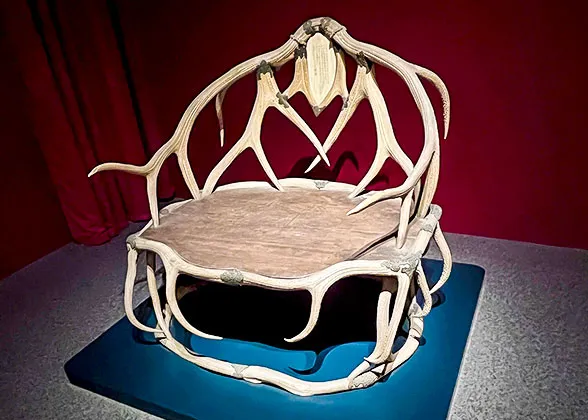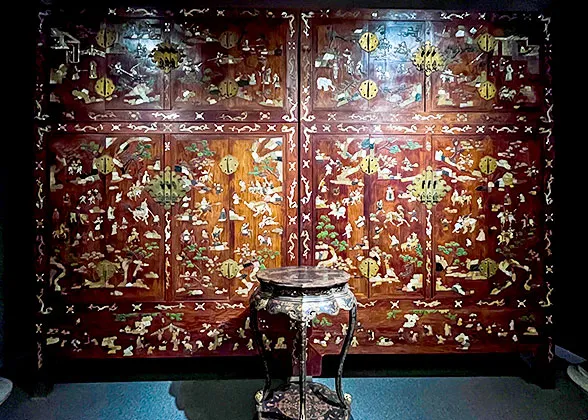Furniture Gallery, South Warehouse (Nandaku)
The Furniture Gallery is located in the South Warehouse (Nandaku) area in the southwest corner of the Forbidden City. It showcases over 300 pieces of furniture from the Qing Dynasty (1644-1911), predominantly from the golden age spanning 1662 to 1795. On display are various types of tables, chairs, cabinets, screens, and more.
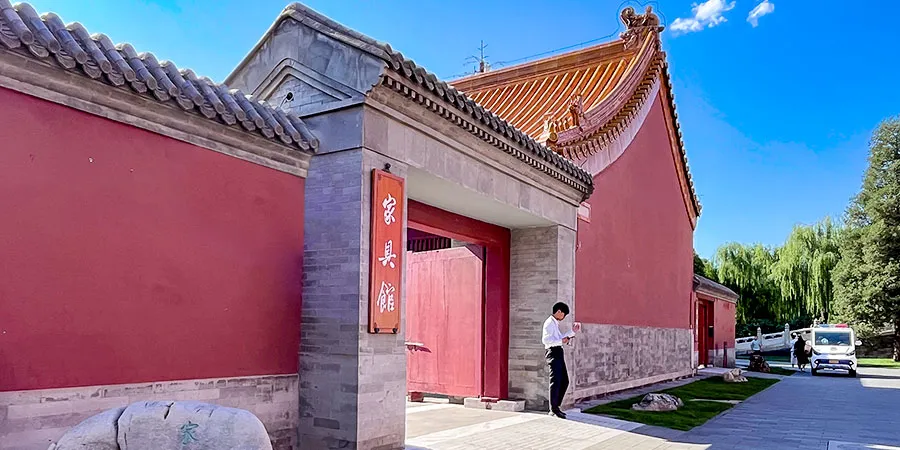 |
| Furniture Gallery, Forbidden City |
In the first part of the exhibition, themed settings such as courtyards, study rooms, and music rooms are brought to life with more than 30 carefully selected furniture pieces. Step into it, you will find it's like stepping back in time to experience ancient imperial life. The last half boasts a warehouse-style display of over 300 pieces, resembling an IKEA for ancient Chinese furniture.
Top Exhibited Furniture
Emperor Qianlong's Deer Antler Chair
Crafted from the antlers of deer hunted by Emperor Qianlong himself, this unique chair incorporates natural deer antler forms into its design. The backrest even features an inscription of a poem composed by Qianlong.
But this chair is not meant for sitting – it stands as a symbol and reminder of the Qing court's rich equestrian and archery traditions.
Empress Dowry Treasure Chests
|
|
Standing at 2.7 meters (8.86 feet) tall and 1.8 meters (5.91 feet) wide, this pair of treasure chests is adorned with intricate patterns depicting figures, mystical creatures, mountains, and plants, all inlaid with sparkling precious gems such as turquoise and obsidian.
Inside, there are pouches, handkerchiefs, accessories, and other items commonly used by noble women. It is speculated that these chests were part of the dowry of Emperor Qianlong's deeply loved first Empress Xiaoxianchun (1712~1748).
Restored Scene of Emperor Qianlong's Living Room
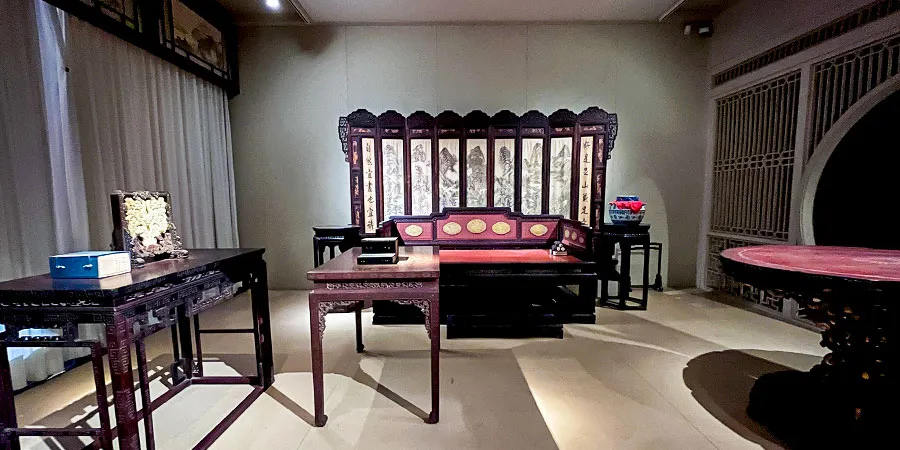 |
| Restored Emperor Qianlong's Living Room |
This setting is inspired by an ancient painting, where Emperor Qianlong (1711~1799) sits comfortably on a couch in his living room, surrounded by his cherished artifacts.
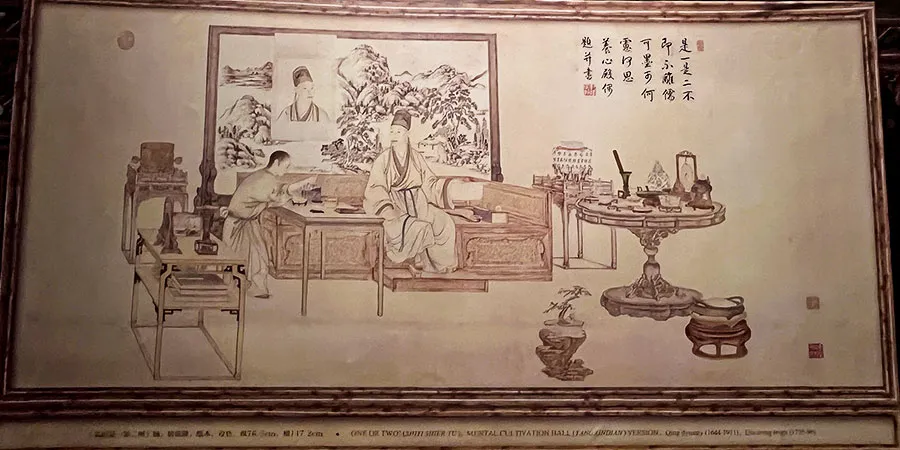 |
| The Painting of Qianlong in His Living Room |
To recreate the scene, curators spared no effort to select the matched items from the Forbidden City's numerous collections, so that visitors could have a glimpse into the emperor's life from the displayed red sandalwood and copper floral couch, colorfully painted sunflower-shaped table, landscape-painted screen, and even smaller items like the s-shaped jade scepter, books, ink stones, table screens, and censers.
Red Sandalwood Screen & Throne Set
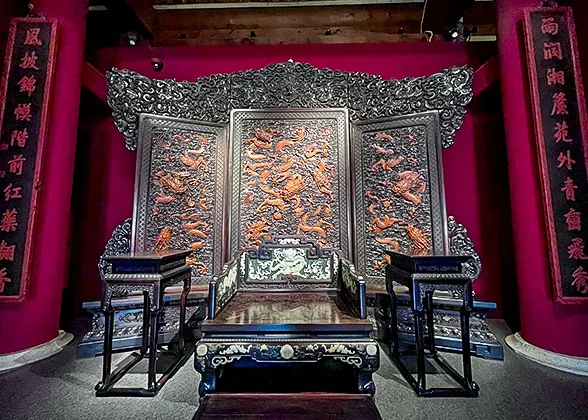 |
| Red Sandalwood Screen & Throne Set |
This red sandalwood furniture set exudes the imperial grandeur. The screen features light brown boxwood dragons that seem to soar against a backdrop of rich red sandalwood clouds.
In front, the throne boasts dragons intricately carved with white jade winding around its back and armrests, accompanied by bats and floral patterns, all symbolizing prosperity and good fortune.
In front, the throne boasts dragons intricately carved with white jade winding around its back and armrests, accompanied by bats and floral patterns, all symbolizing prosperity and good fortune.
Qing Dynasty "Aquarium" Screen
Made from superior Indian rosewood, this sturdy and elegant screen is decorated with an enamel-outlined centerpiece depicting antique pavilions and towering mountains. What’s more, it cleverly integrates jade sculptures of figures into the scene, adding a touch of life.
But the real surprise is that a glass aquarium hides behind the engraved scene. When filled with goldfish and water, it brings the static depiction of mountains and pavilions to life.
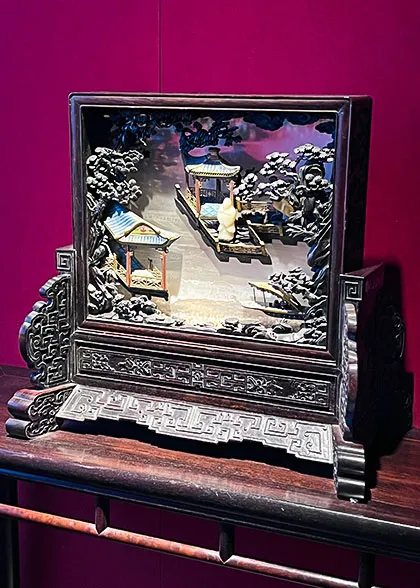 |
| Aquarium Screen |
Where did the Furniture Gallery exhibits come from?
The Furniture Gallery in the Forbidden City mainly displays items once stored and used by the Qing court, with additional pieces sourced from domestic museums, donations, and purchases.
Among the exhibits, the preservation of these court furniture has been arduous. To escape the Anti-Japanese War, from 1933 to 1945, a large number of imperial furniture were moved south, spanning multiple provinces.
Although some bulky furniture were left behind, and were looted or destroyed in bombings, about 90% of the moved finest pieces were preserved.
Starting from the 1950s, these preserved pieces were gradually brought back and stored in the Forbidden City's warehouses. In 2015, the Forbidden City embarked on renovating the South Warehouse to restore the furniture. Since 2018, these long-sealed court craftsmanship treasures that had survived the war has eventually been open to visitors.
Starting from the 1950s, these preserved pieces were gradually brought back and stored in the Forbidden City's warehouses. In 2015, the Forbidden City embarked on renovating the South Warehouse to restore the furniture. Since 2018, these long-sealed court craftsmanship treasures that had survived the war has eventually been open to visitors.
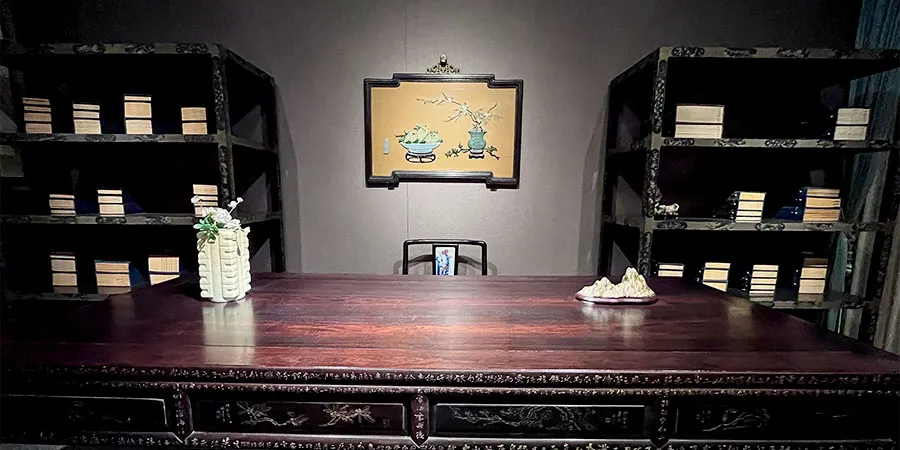 |
| A Rosewood Table Once Moved South during Wartime |
Origin of the Forbidden City's Furniture
The Forbidden City's furniture mainly originated from the Manufacturing Office of the Imperial Household Department in the Forbidden City, tasked with crafting items for the emperor.
In 1662, amid a surge in palace and garden construction, skilled craftsmen from across the country were recruited to the Manufacturing Office to meet the increased furniture demand. However, because of limitations in space, staffing, and materials, the furniture produced here tended to be smaller in size.
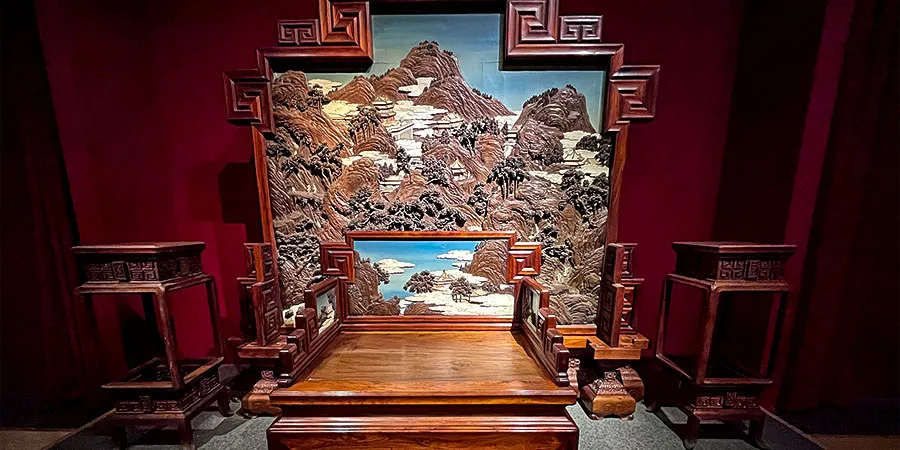 |
| A Set of Furniture Made by Craftsmen from Guangzhou |
Beyond the Manufacturing Office, the Imperial Household Department also set up branches in prosperous areas, where labor and materials were abundant. They produced numerous larger pieces of furniture designed by the Manufacturing Office.
Additionally, officials from across the regions presented tribute to the royal family, often including complete sets of high-quality furniture. After inspecting these tributes, the emperor would select his favorite to keep in the palace.
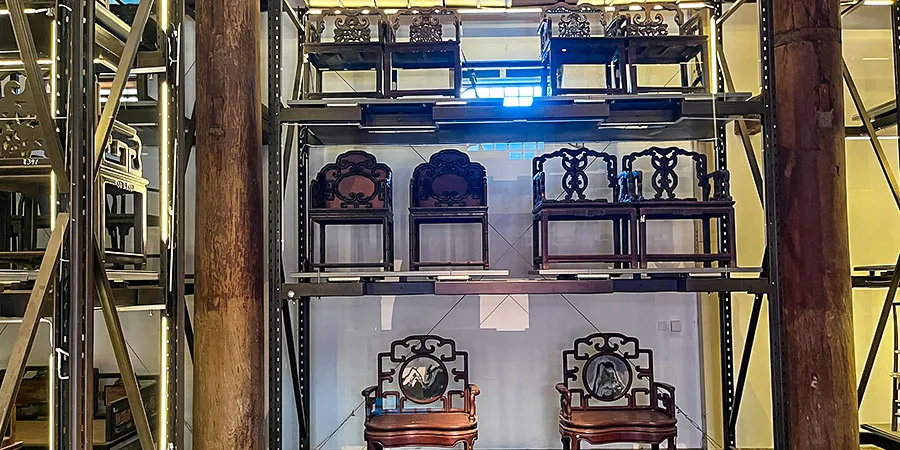 |
| Warehouse-style Display in the Furniture Galley |
Head north to explore the Hall of Martial Valor (Wuyingdian), which houses the Ceramics Gallery.
Or, turn east towards Taihemen Square and follow the central axis to visit the three main halls.
- Last updated on Aug. 08, 2025 by Jally Zhang -
